Over two decades and four generations in, Suzuki has lashed some proper off-road focused kit to its venerable V-Strom 1050
It’s been 21 years since the first V-Strom rolled onto Aussie shores and in that time, it has earned a reputation as a comfortable and dependable adventure tourer. But up until now the V-Strom has carried itself with a definite road-riding bias, and a lack of ground clearance, suspension travel and a bulging waistline have resigned it to soft-roading duties. Enter the 2023 V-Strom 1050DE, a V-Strom that now sports a bunch of changes aimed at giving Suzuki’s mighty V-twin all-roader greater off-road chops.
Although it’s considered the fourth generation V-Strom, it’s more of an evolution of the V-Strom 1050XT of 2020-2022 than it is an all-new model. The Euro 5-compliant 1037cc, 90° V-twin engine remains unchanged except for a set of sodium-filled exhaust valves which are used to reduce temperatures in the combustion chamber, which means the DE is pushing out the same 79kW (106hp) of power at 8500rpm and 100Nm of torque at 6000rpm.
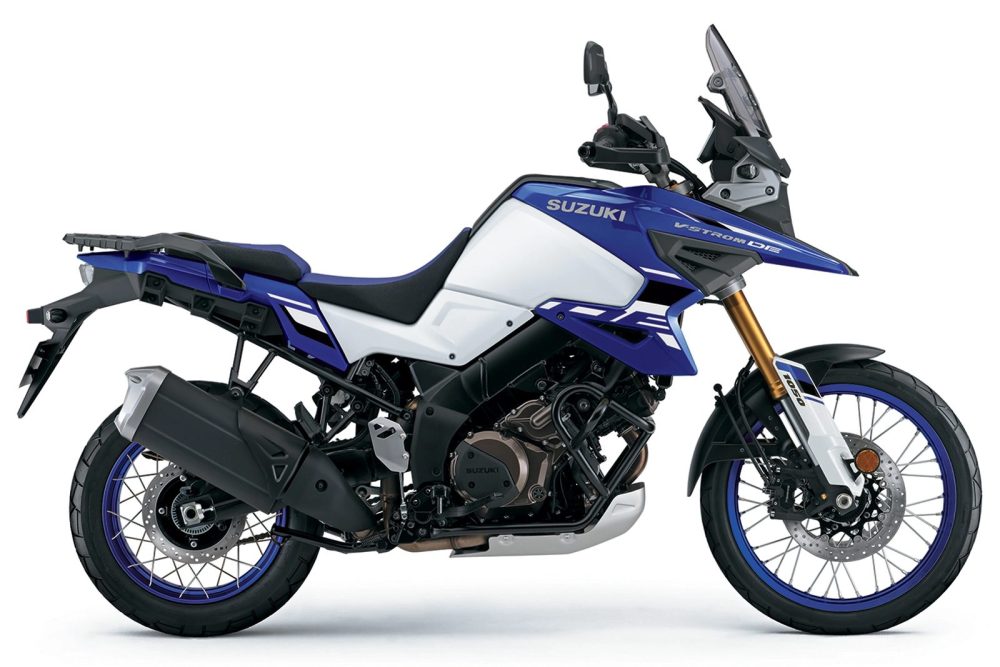
Not that I’m complaining, because its ancestor, the 1997 TL1000S twin, is one of the best engines ever made. And after so many years it’s totally sorted and delivers the goods in a refined, yet character-filled manner. Suzuki has made internal and external gearing changes so although there’s no extra power on tap the DE now bangs harder than it ever has, especially thanks to the change from a 41-tooth rear sprocket to a 45 tooth.

There’s now a two-way quickshifter, and while not all quickshifters are created equal, the Suzuki’s is better than many others: slow, fast, on the gas or off it, it works beautifully. The DE also comes with a new ’bar that is 40mm wider to give better leverage, a sturdy bashplate, crash bars, longer-travel suspension, a longer swingarm for better stability, a suite of handy electronics and a 21-inch front wheel – a first for the V-Strom!
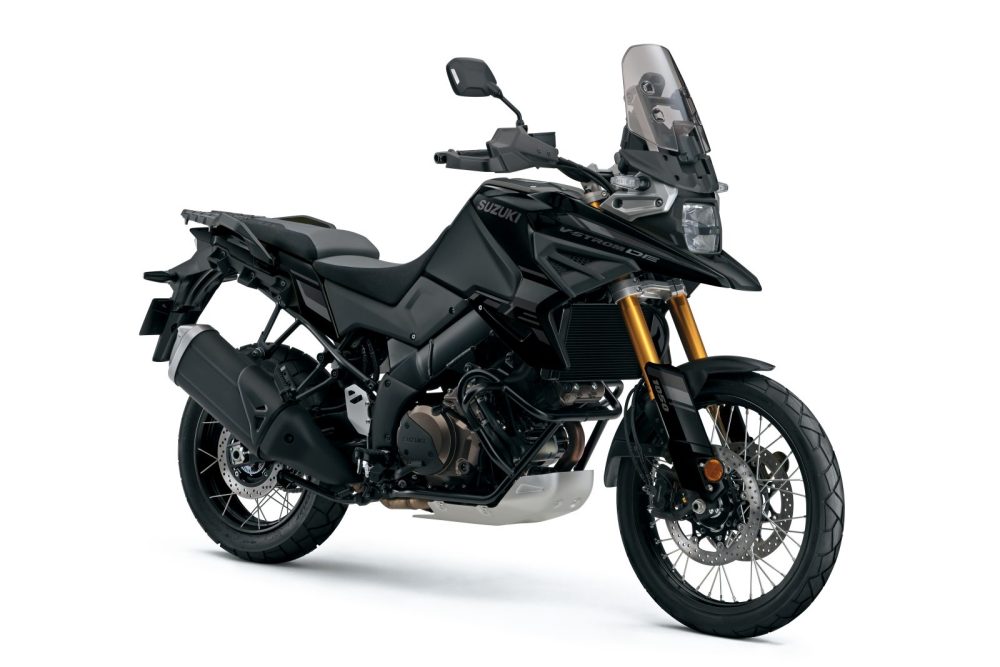
These are all good changes if you want to up the off-road spec of your machine, but there’s a literal elephant in the room in that it’s put on some weight in the off-season. With all the additions, the DE weighs 5kg more that the XT it replaces at a not-insignificant 252kg (wet).
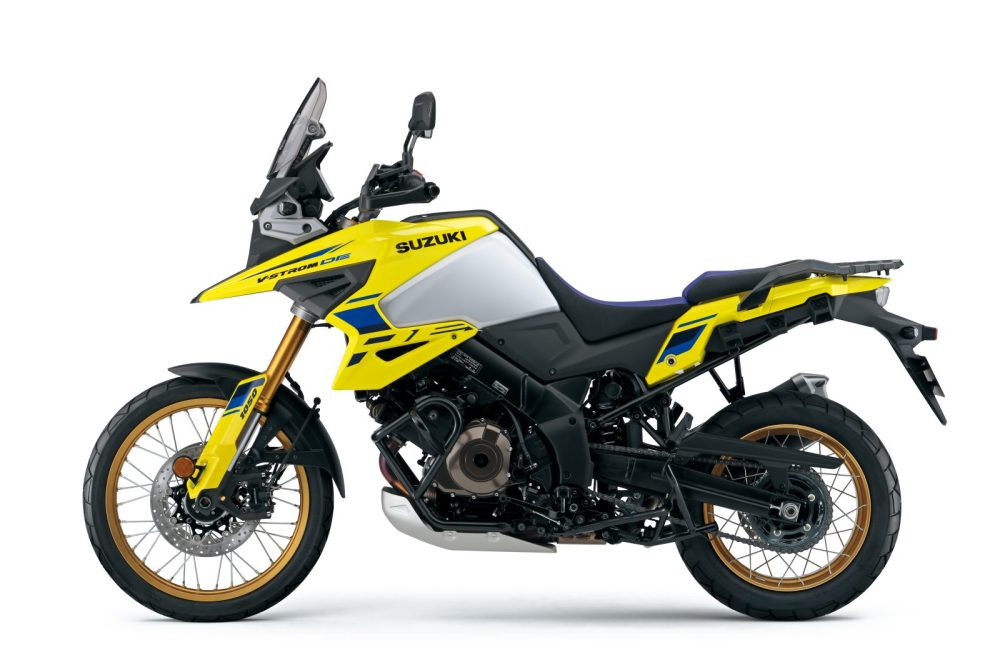
That’s not out of control considering the weight for other big-bore adventure machines, but it’s how a bike carries its weight that’s just as important in this category. To that end, the DE feels top heavy. And it’s particularly noticeable when riding slowly off-road, when pushing the thing around, and when tipping the beast into a corner on the tarmac.
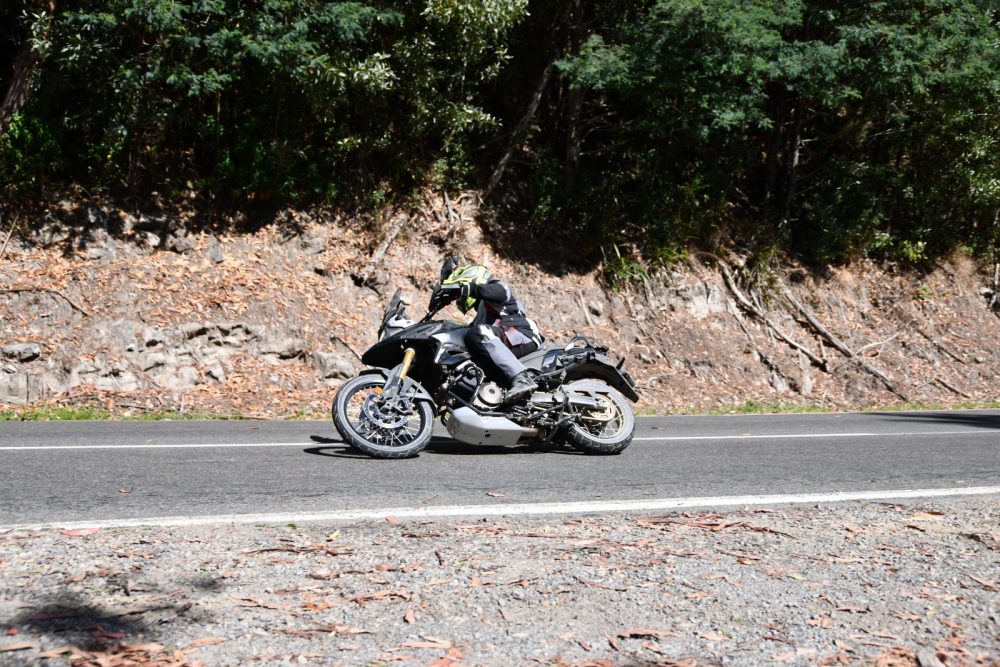
In addition, the DE’s 880mm seat height might have short-legged riders sweating and hoping for the best when coming to rest – thank your chosen deity the DE has decent crash bars. Partial help is at hand though, with an optional low seat available that brings the seat height down by 30mm to a more manageable 850mm.
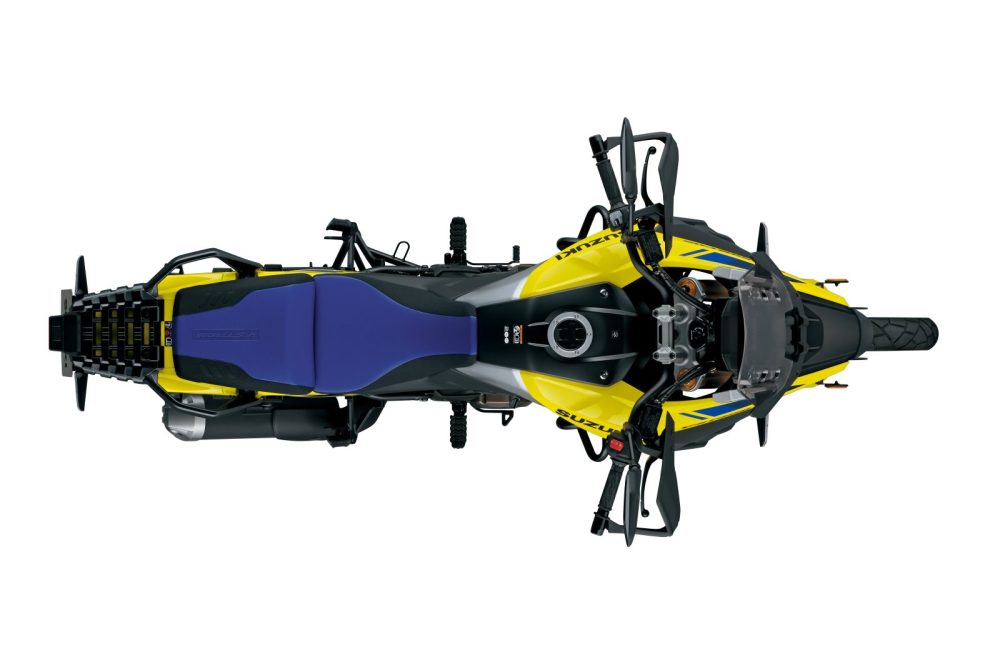
The DE’s alloy frame remains unchanged but there’s now a longer and more rigid swingarm hanging off it for improved off-road stability. Bolted to the front is an adjustable 43mm KYB USD fork, while on the back you’ll find an adjustable KYB monoshock with external preload knob. The suspension is one of the most significant changes to the DE with suspension travel now coming in at 170mm up front and 169mm at the rear, a 10mm increase on the front and 9mm on the rear. Subsequently, ground clearance is an improved 190mm.
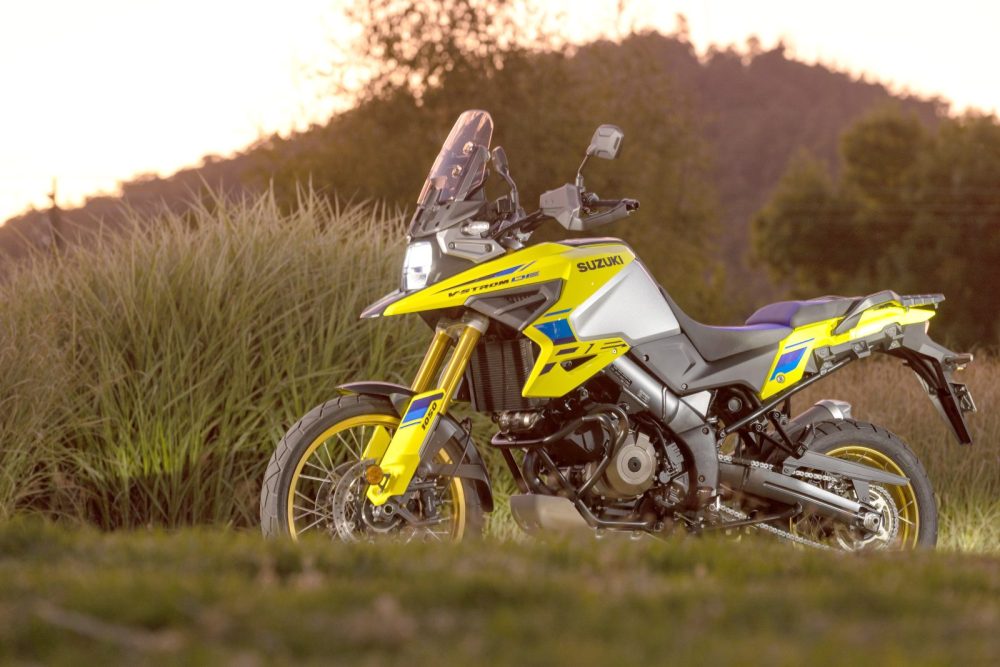
One of the other important changes is the addition of that 21-inch front wheel. The DE tracks over rougher ground better than the XT, which used a 19-inch front, and the steering on the road feels a bit livelier without being overly twitchy. Strangely, the rear is the same 17-inch tubeless setup as the XT, but the new front is a tubed affair. Suzuki reckons this is due to it being the ‘optimal’ setup, but I’m erring on the side of the ‘let’s save some bucks’ setup.
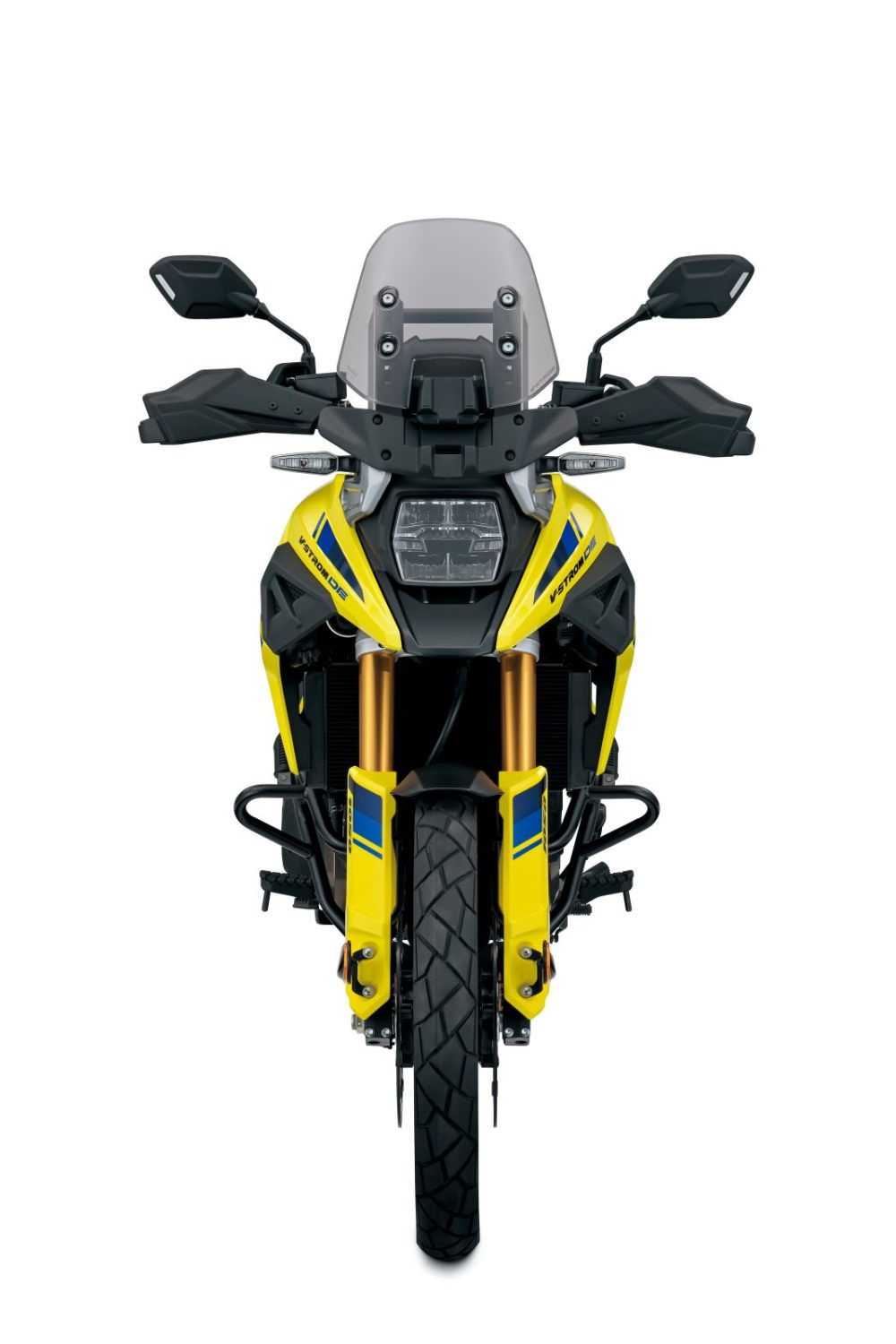
The wire-spoked wheels are shod with Dunlop Trailmax Mixtour rubber (90/90-21 and 150/70-17), and I must say I was apprehensive about hitting the dirt on them. But they worked okay for what they are which is a dual-purpose tyre designed more for road than off-road and, just like the V-Strom itself, they’ll take you most places if you ride accordingly. On the road they are fantastic, and once you become accustomed to the 1050’s top-heavy feel, you can punt the ’Strom pretty hard.
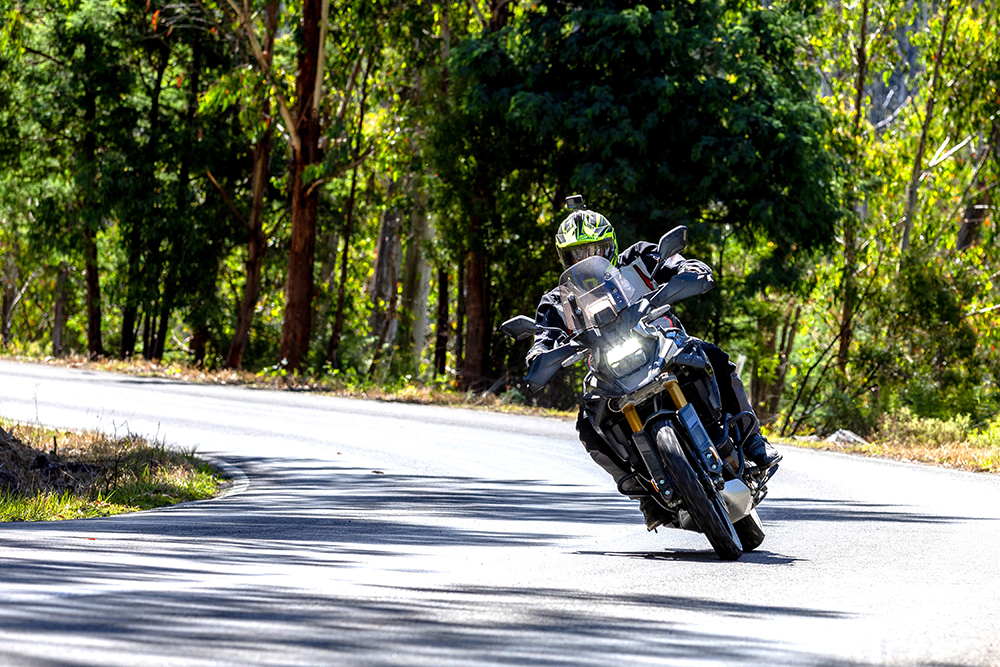
As mentioned, the DE is equipped with a large aluminium bashplate. Gladly, it’s not a token bashplate made out of aluminium foil so you shouldn’t need to upgrade. And if you’re taking the V-Strom off-road you do need that protection because the oil filter is still positioned vulnerably at the lower front of the engine.
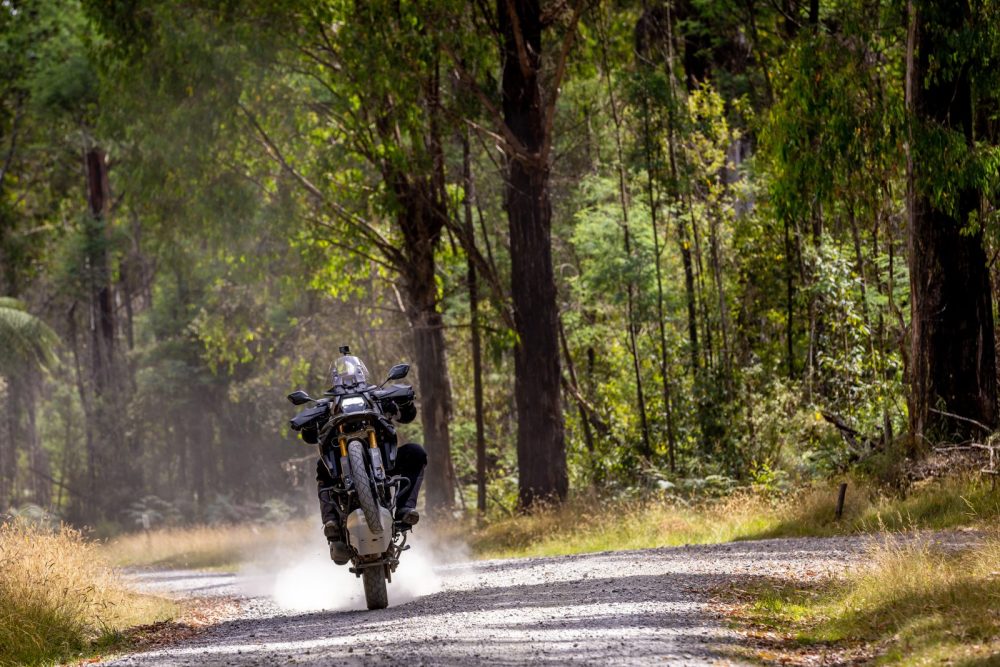
The other big news for the DE is its six-axis Bosch IMU that governs the ride modes (A, B, C), switchable cornering ABS and traction control, and a host of other fancy electronics. Although the DE’s power delivery is about as linear and smooth as it gets, the ride modes allow you customise the delivery to suit your tastes. All ride modes give you access to all of the DE’s power and torque – there’s no reduced output mode. The difference is in the throttle response and the delivery of the power and torque.
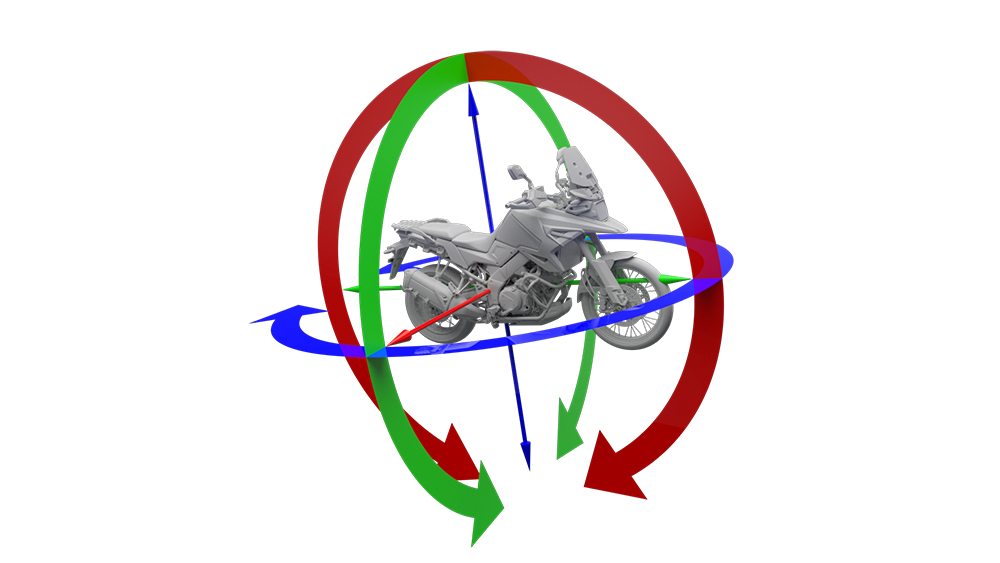
Mode A has the sharpest throttle response, which I found a bit twitchy for my liking – fine on the road but a bit trigger-happy on the dirt. The delivery is a bit more ‘all guns blazing’ and there’s a definite lift in urgency when the needle hits 6000rpm compared to the other modes.
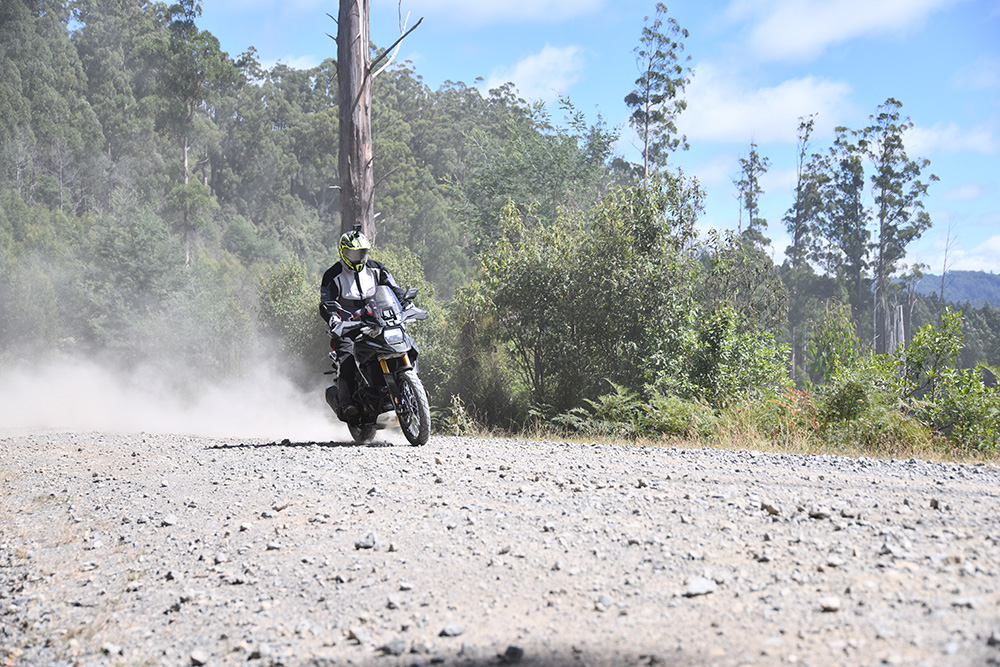
Mode B delivers a less-abrupt throttle response which I preferred, and the power and torque curves feel more linear with no discernible kicks through the rev range. And C mode is more of the same – softer throttle response and an even more linear power delivery. If it were possible, I’d give mode C back for a discount as the DE’s engine is so refined and the power delivery so predictable it really doesn’t need it. Add to that the practically flawless fueling, and if you’re still struggling with throttle metering maybe the V-Strom 650 would have been a better choice.

Unique to the DE is the G mode, which stands for gravel. It alters the traction control to allow some spin of the rear wheel, which is a non-negotiable when riding off-road with any gumption.

It’s a nice feature, and perfect for riders not accustomed to hanging the rear out who can now rip along knowing the system will stop the rear wheel from coming too far around. Experienced off-roaders may find that the amount the system lets you drift to be insufficient, and there were times that I wanted a bit more leeway to steer with the rear. At more sedate speeds, though, I reckon the system is near perfect, as is the entire traction control system in general. It’s not one of those systems that cuts power abruptly and, when it does kick in, the DE still drives forward helping you maintain momentum. In off-road, momentum is nearly always your friend.
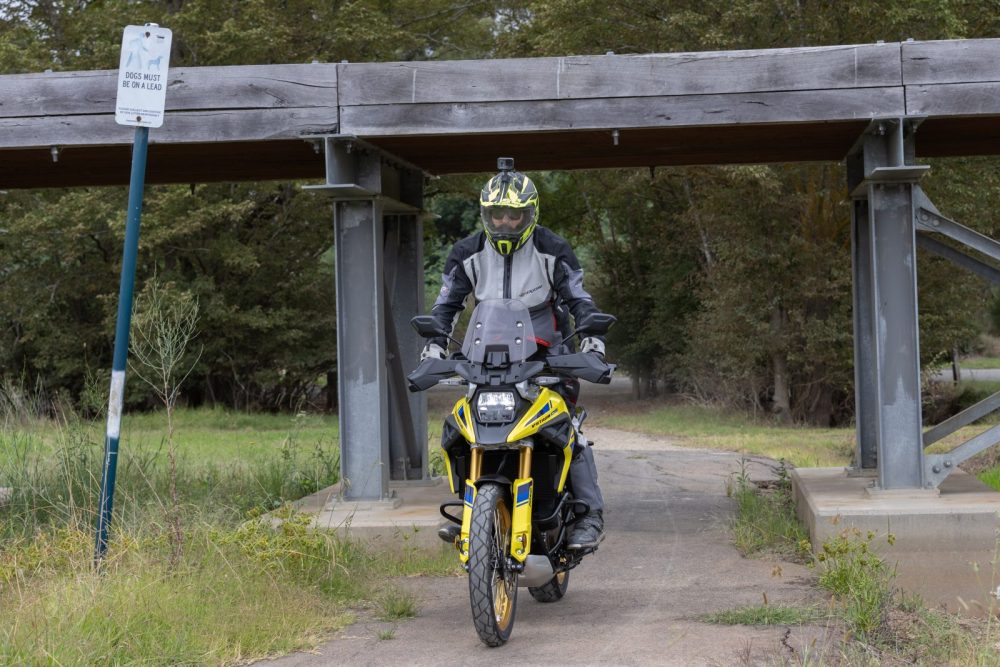
The rear ABS can be turned off and, although the front ABS can’t be deactivated, it did a great job in the rocky and dusty downhill section I rode on the launch. I usually prefer to turn the ABS off on both ends, but I was content with the front ABS in its use and application.
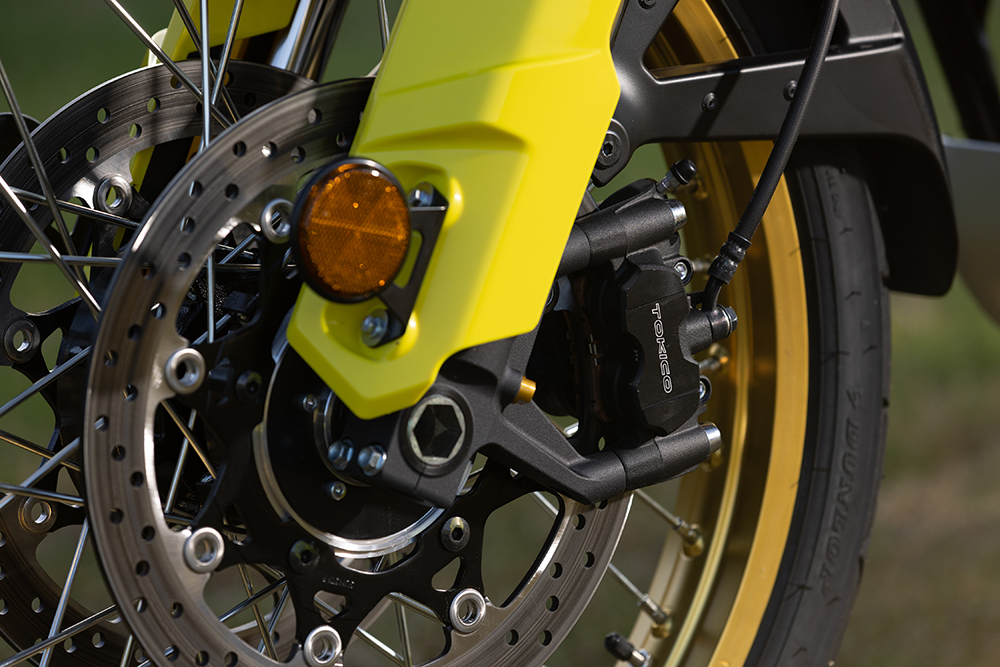
V-STROM 1050DE
The front brakes can muster up some serious retardation, with stopping power provided by a set of Tokico radial monobloc four-piston calipers gripping a set of 310mm discs. The rear is also pretty good, with the tail-end sporting a 260mm disc matched to a single-piston Nissin caliper. My only gripe was with excess free play in the rear brake pedal. You’re a fair way into the stroke before anything happens and then it’s hard to gauge where you are in the narrow window between slowing down in an orderly fashion and locking the rear Dunlop.
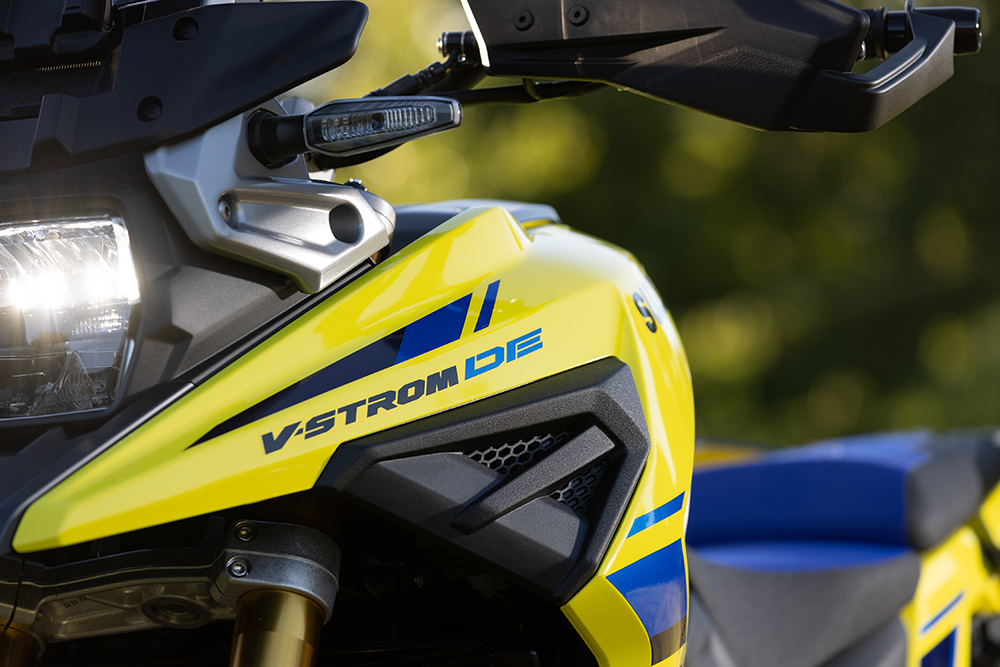
There are three levels of traction control intervention and, if you’re feeling brave enough to let the big V-twin do what it wants, you can turn it off completely. But again, the twin is so tractable and smooth I had the traction control switched off for much of the road and off-road sections.
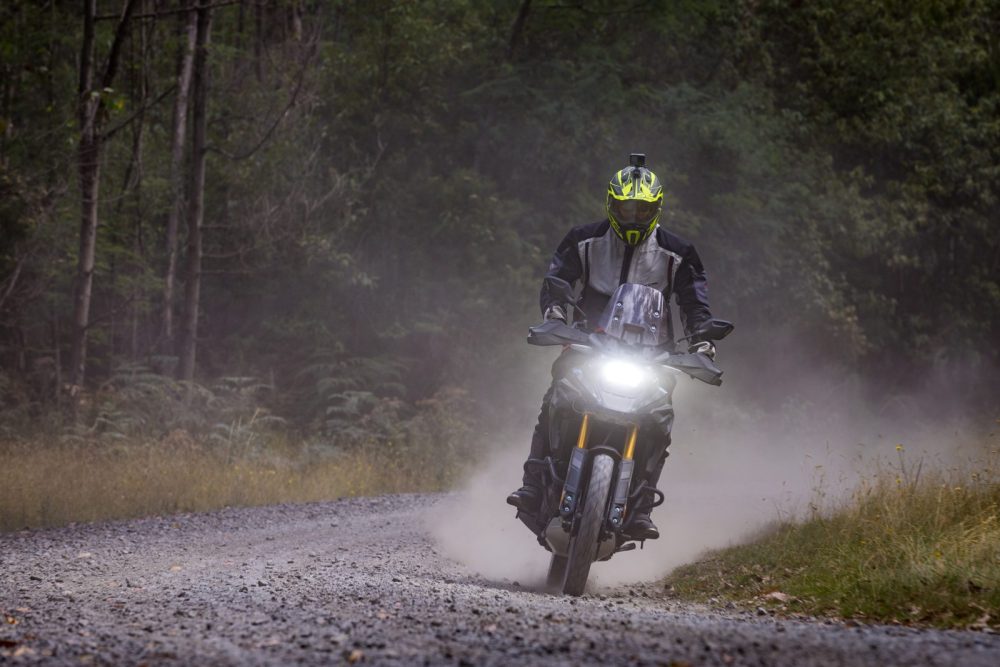
The rider-aid list doesn’t end there. The DE also gets Suzuki’s Hill Hold Control System that stops you rolling back when stopped on a slope, and a function that monitors and controls rear wheel lift and controls brake pressure while descending steep declines.
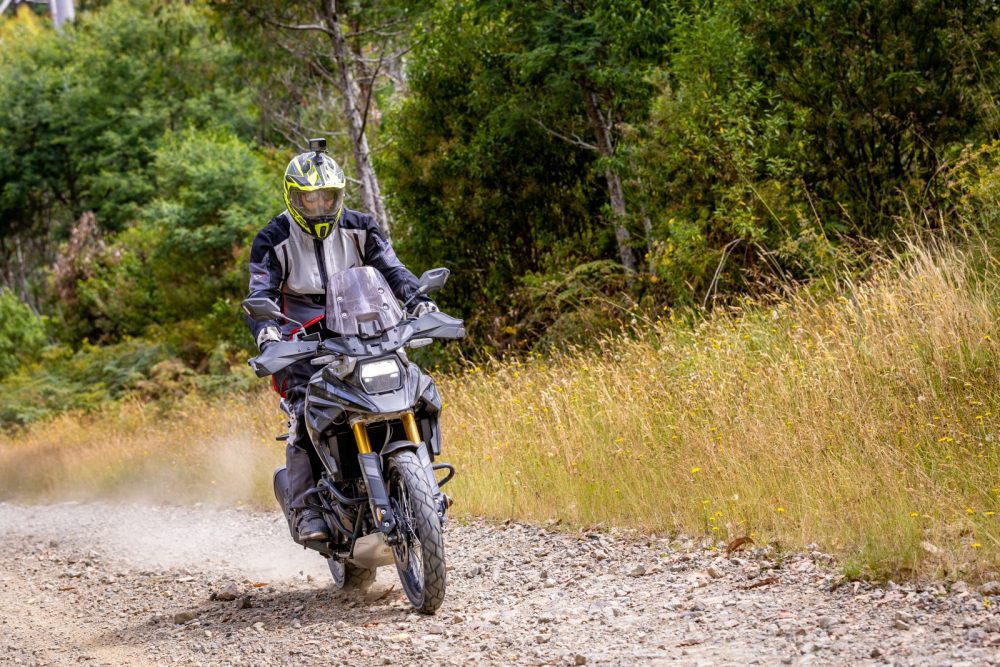
While not groundbreaking, these electronic additions are welcome as Suzuki catches up to the rest of the adventure bike pack. But where the DE leaves the others in its dust is the way you control all its functions. The 1050 is decked out with a full-colour five-inch TFT dash and it is so simple and elegant I reckon other manufacturers should be taking notes from Suzuki. There are only three buttons that need to be used to change or find the information or setting you’re after. You don’t need to flick through half a dozen different menus on several different pages, it’s all there in a simple and easy to navigate design. With the complexity of some of today’s systems, the DE’s dash is a breath of sweet-smelling air – bravo Suzuki!

If I must whinge about something, it’s the DE’s non-adjustable screen. The standard 1050 has a tool-less system that has a flip-up latch at the front which lets you adjust the height. And making matters worse, as the DE’s screen is based on the base-model’s system, there’s a bunch of redundant plastic fittings that look kind of average on a near-$25k motorcycle.

Besides that, the screen is just a little too short for my 186cm frame, but anyone under six-foot will be happy I reckon.
There are other handy additions like a USB port on the left-hand side of the instrument cluster and a 12v port under the seat, cruise control as standard and heated grips are available as an option. The cockpit is roomy, the seat wide and plush and it’s comfortable when you’re up on the wide ’pegs which have removable rubber inserts.
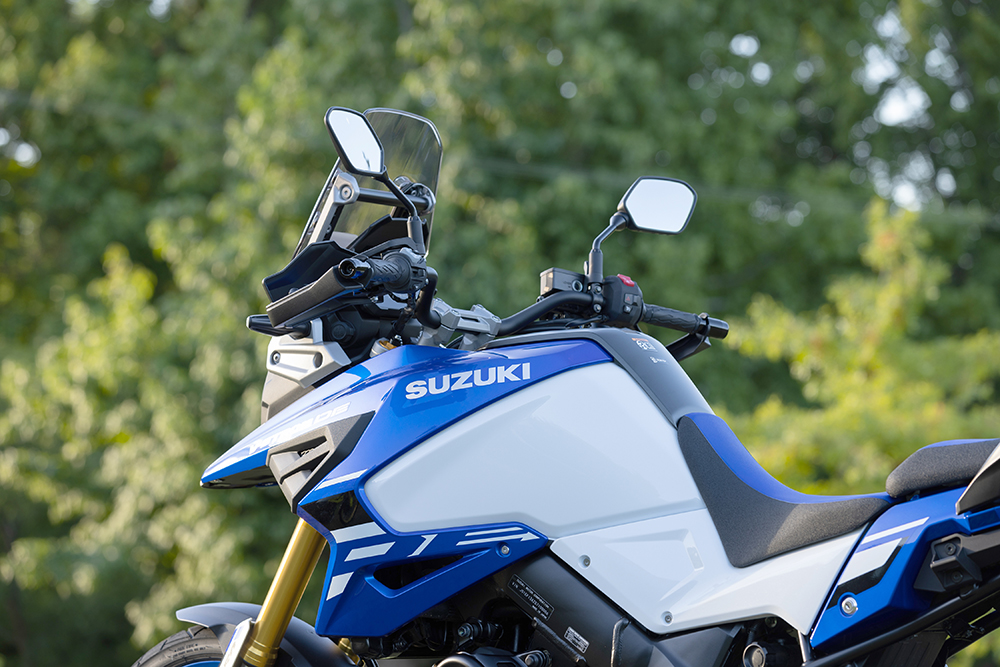
However I found the setup of the wide handlebar all wrong for me. For my size, I felt the ’bar needed to be closer when in the seated position and further away when standing.
That’s not something that can really be fixed – I guess it’s a compromise that needs to be made when you stand up on a bike that was really designed as a roadbike. Having said that, it’s not so uncomfortable that it causes issues, I just never quite felt all-day comfortable with either riding position. But other riders will disagree.
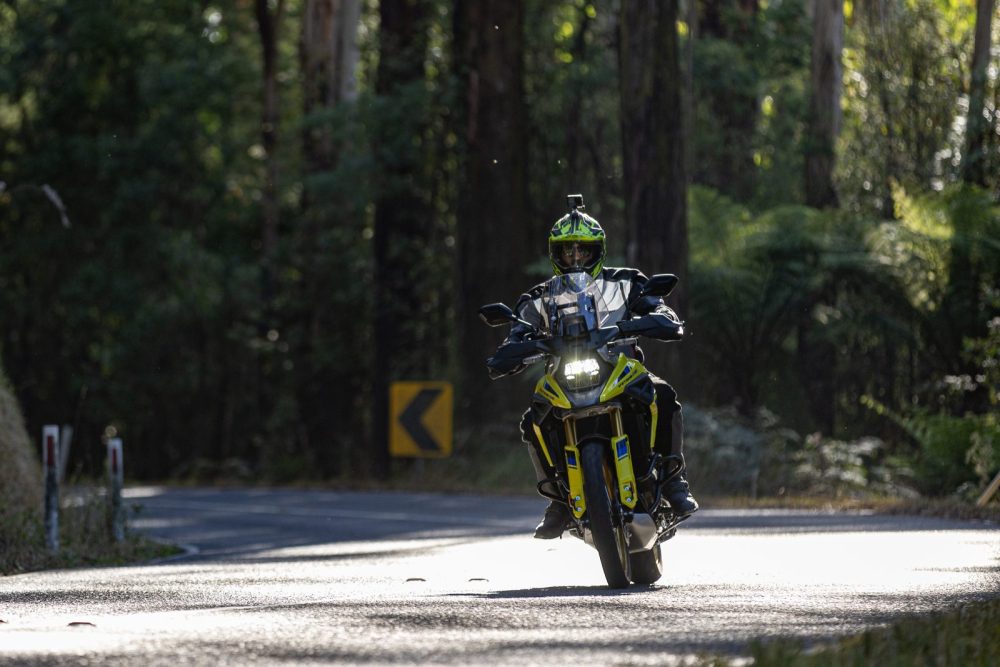
All the changes to the DE will be welcomed by anyone looking to do a little more off-roading on a V-Strom. The DE’s new off-road abilities haven’t come at the cost of the Strom’s renowned on-road performance or comfort, and honestly for the extra $1700, I don’t know why you’d go with the standard model unless you’re particularly short.
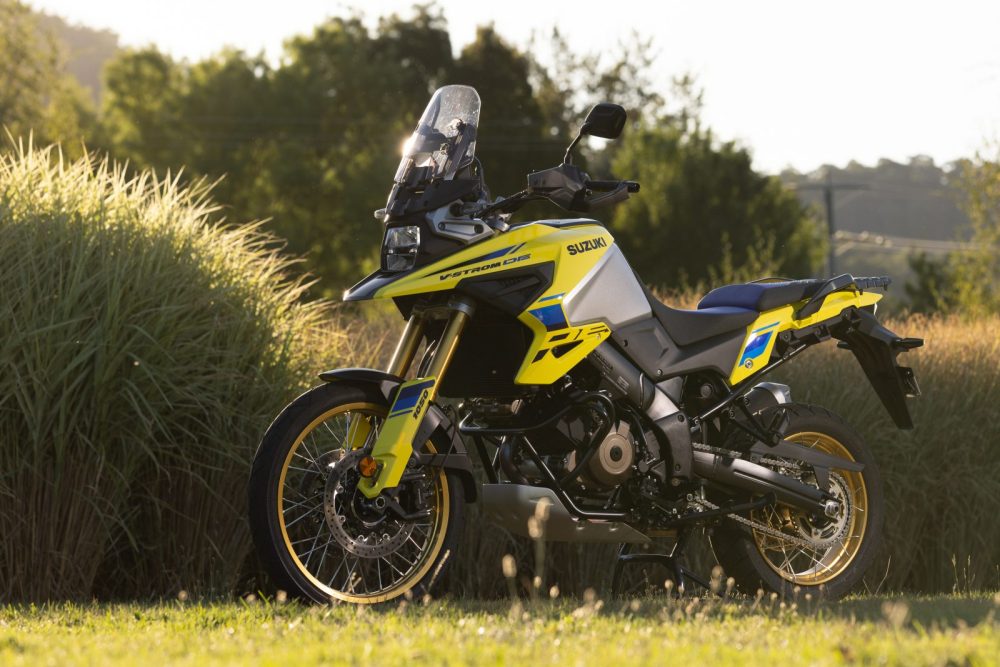
Despite the upgrades, the DE has a lot of competition coming at it from different sides. If you’re less dirt-orientated, there’s the standard ’Strom, Ducati Multistrada V2, Triumph Tiger 900 Sport and CFMoto’s $16k 800MT Explore. If you’re after more off-road thrills, there’s a bunch of bikes from KTM, Husqvarna, Triumph and Ducati.
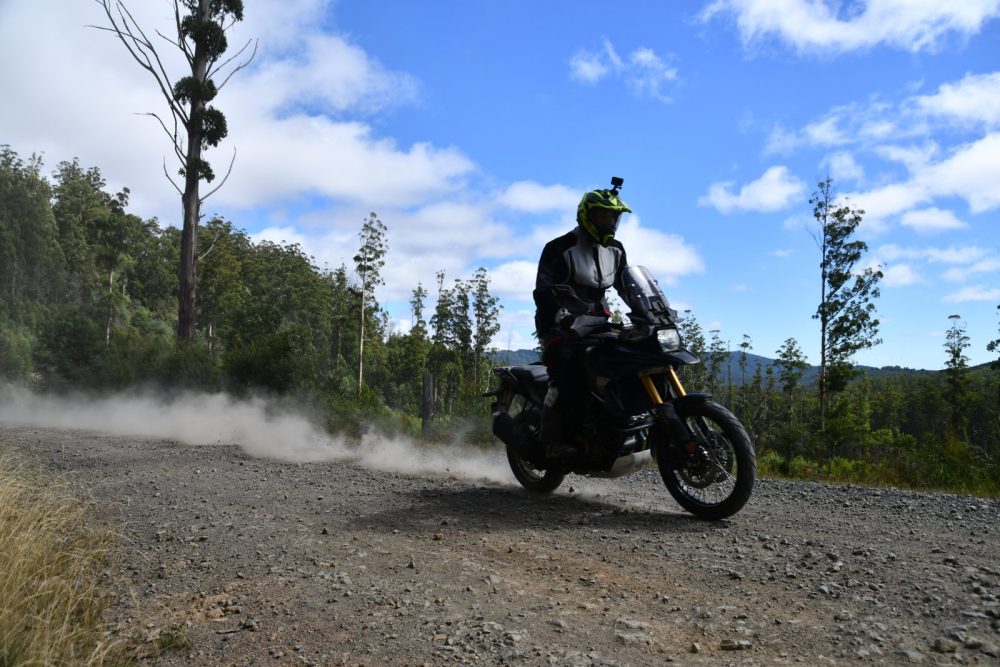
There’s no doubt the updates have made the DE a better adventure tourer. There might be better off-roaders, and there might be better on-roaders, but few offer the all-round versatility, comfort and reliability that the V-Strom has always been famous for.

TEST: PETE VORST PHOTOGRAPHY TGB IMAGES